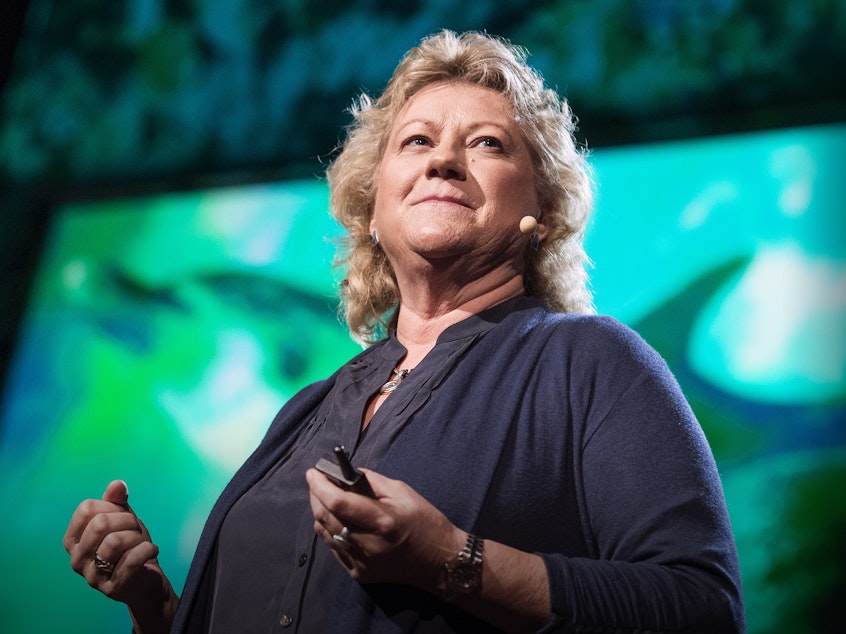Denise Herzing: Do Dolphins Have A Language?

Part 2 of the TED Radio Hour episode TED Radio Wow-er
We know that dolphins make distinctive clicks and whistles, but is that a language? Researcher Denise Herzing thinks it might be, and for the past 35 years she's been working to unlock it.
About Denise Herzing
Denise Herzing is the founder and research director of the Wild Dolphin Project, which strives to understand the social structure, behavior, communication, and habitats of dolphins outside the confines of an aquarium or research facility.
For more than three decades, she has spent each summer observing a pod of Atlantic spotted dolphins in the Bahamas. Her team joined forces with Georgia Tech to build a wearable device that allowed them to better understand dolphin language.
Sponsored
Herzing is the author of the 2011 book Dolphin Diaries, and she is also an assistant affiliate professor at Florida Atlantic University.
Access the original TED Radio Hour segment here.
Activity Guide - Printable PDF
Activity 1: Book Cover
The TED Radio Hour has not made a book about our show or any of our episodes... yet! In this activity, we're planning on making a book based on this segment and you get to design the cover for it. You can design it however you want, but all we ask is that you include drawings of different ideas and scenes we learn about in the episode (like Denise using the dolphin keyboard!)
Sponsored
Materials:
Paper and any art supplies you can find.
How To Do It:
It may be helpful to first select a few actions and scenes you'd like to draw, but if you're feeling the creative juices flow, just go for it!
Looking at a blank page can be overwhelming sometimes. Trust me, it happens to us at the TED Radio Hour all the time. If you're feeling that way, you can print off this template. Use the circles and corners to fill in the ideas and scenes you'd like to draw.
Sponsored
Activity 2: Full Of Hot Air
Dolphins and toothed whales (together, scientists call them odontocetes) are very sonic animals. They use sound to communicate and many use it to echolocate as well. But they're not vocal in the way we humans are, as they don't have vocal cords. Out of the water dolphins can make different sounds by changing the shape of their blowhole, which is similar to changing the shape of our own mouths. Underwater, though, they use a totally different system, and they make sounds essentially without releasing any air. You can learn more about how that works here. In this activity we're going to try to talk like a dolphin. Hint: it will be hard!
Materials:
Nothing! But grab a partner, maybe a sibling or a parent—or if you have one, a dog or cat. This whole segment is after all about interspecies communication.
How To Do It:
Sponsored
Take a deep breath, plug your nose by pinching it shut, and try to communicate with your partner without releasing any air. If your partner is a pet, try saying their name or asking them to "come here."
Give yourself a two minute time limit.
When you're done, reflect on what made it hard, what solutions you found, and hypothesize why dolphins may have evolved to communicate this way.
Then listen to vocalizations from all kinds of marine mammals here and compare your dolphin speak to theirs
Source: adapted from Voices In The Sea [Copyright 2020 NPR]



